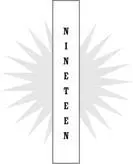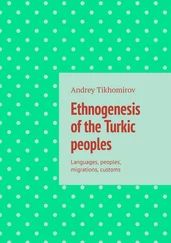It proved very difficult to come up with a scientific test of the Whorfian hypothesis. Suppose you compared two groups of people who spoke different languages, and you found some kind of difference between the groups. How would you know it was the language that caused that difference? Perhaps it was from a difference in culture. Perhaps it was the culture that shaped the language, and not the other way around. Every language was attached to a culture, and there was no way to separate one thing from the other. This was one of the problematic issues that came up when a group of top linguists, psychologists, and philosophers got together for a conference on the Whorfian hypothesis in 1953. The papers from the conference were published in a book called Language in Culture , and soon every field that touched on language and human behavior was buzzing about it.
A sociologist named James Cooke Brown, who had just taken a position at the University of Florida in Gainesville, was paying close attention. In the winter of 1955, when classes let out for the holidays, he “sat down before a bright fire to commence what I hoped would be a short paper on the possibility of testing the social psychological implications of the Sapir-Whorf hypothesis.” He wanted to show that “the construction of a tiny model language, with a grammar borrowed from the rules of modern logic, taught to subjects of different nationalities in a laboratory setting under conditions of control, would permit a decisive test.” If the problem with the Whorfian hypothesis experiment was that natural languages couldn’t be disentangled from the cultures in which they were spoken, then why not avoid the problem by using an artificial language? This “tiny model language” became Loglan (from logical language ), a project that would occupy the rest of Brown’s life. It would grow large enough to be used for original poetry, translations of works like Alice’s Adventures in Wonderland , and, in one case, a proposal of marriage. It would bring Brown fame and disappointment, admirers and enemies, and a trip to federal court over the question of who rightfully owns a language—the man who invented it or the people who use it?

In 1960, Brown published a sketch of Loglan in Scientific American . This was an amazing coup for a language inventor. In a post-utopian, postwar world, where no one even deigned to laugh at new language projects anymore, it was incredible that a major periodical would treat an invented language seriously enough to devote ten pages to it.
Brown had found a way to make language invention respectable by treating his creation with scientific detachment. He didn’t say his language would stop war and heal the world; he presented it merely as an instrument for testing a specific hypothesis. He didn’t crow about how easy it was to learn; he computed a “learnability score” for each word (based on how many sounds in the word overlapped with the sounds for that word in different natural languages) and proposed that the correlation between learnability scores and actual learnability could be tested in the lab. He didn’t make wild claims about the profound and life-altering effects his language would have on thought; he demurred that he was “by no means certain yet that Loglan is a thinkable language, let alone a thought-facilitating one.” His approach, humble, rational, and unemotional, was nothing like the idealistic flights of foolishness that people had come to expect from language inventors. If you wanted to get any attention for your invented-language project in 1960, scientific detachment was definitely the way to go.
Another language called Interlingua tried to adopt a similar approach in the 1950s and 1960s, and got a little bit of success in return. Interlingua was created by a committee called the International Auxiliary Language Association (IALA), which had been founded by Alice Vanderbilt Morris in 1924. The original goal of the association was to promote intelligent and objective discussion of competing invented languages and to encourage scholarly research into the matter of determining both the best form for an auxiliary language and the best uses for it. It was a meeting ground for the high-prestige language inventors and other professionals who were interested in the international language idea (linguists such as Edward Sapir, Morris Swadesh, Roman Jakobson, and André Martinet). Activity fell off in the 1930s and was further disrupted by the war, but the organization survived and ultimately published its own committee-designed Interlingua in 1951.
The first Interlingua periodical was Spectroscopia Molecular , a monthly overview of international work in … molecular spectroscopy. (It involves shooting energy at something in order to see what does or doesn’t bounce back—physicists, chemists, and astronomers do it.) Next came a newsletter, Scientia International , a digest of the latest goings-on in the world of science. Interlingua positioned itself as a way for scientists of different language backgrounds to keep up with their fields. They wouldn’t even necessarily have to speak the language. As long as they understood it, it would fulfill its businesslike function. By attaching itself to science, and refraining from grand claims, Interlingua spread a little further than it otherwise might have. Some major medical congresses and journals published abstracts in Interlingua throughout the 1950s and 1960s. But it failed to sustain interest. Interlingua was another one of those Greco-Latin least common denominator languages, and if you were interested in those kinds of things, you were probably already doing Esperanto. Everyone else just wasn’t interested in those kinds of things, science oriented or not.
Loglan, however, was doing a different kind of thing. Scientific detachment was only one part of the appeal of Loglan (the part that convinced people not to dismiss it immediately). What really got people interested was its new kind of design principle—the calibrated alignment of language with logic. Actually, the principle wasn’t new at all. It stretched all the way back to Leibniz and Wilkins and the seventeenth-century idea that we could somehow speak in pure logic. It was new in that great strides had been made in the field of logic since then, so the idea of “speaking logic” now meant something a bit different.
In the early twentieth century, philosophers such as Gottlob Frege, Bertrand Russell, and Rudolf Carnap had developed a preliminary mathematics of language, but it was not a mathematics of concepts—no breaking down the concept dog into the basic elements that defined its dogness. It was instead a mathematics of statements. It was a method of breaking down propositions like “The dog bit the man” or “All dogs are blue” into logical formulas. These formulas were not expressed in terms of nouns, verbs, and adjectives. Instead, like mathematical formulas, they were expressed in terms of functions and arguments. Much like x(x + 5) is a function waiting for you to tell it what the argument x is, dog(x ) is a function, “is a dog,” waiting for you to tell it what particular x is a dog. Blue ( x ) is a function, “is blue,” waiting to find out “what” is blue. Bite(x, y ) is a function waiting for two arguments, the biter and the bitten. Give(x, y, z ) is a function waiting for three arguments— x gives y to z.
The power of such a notation, both the mathematical and the logical, is that you can do a whole lot without ever knowing what x is. The formula x ( x + 5) can itself become an argument in a larger formula; it can participate in the solving of equations and proofs. It may never return a specific number, but it can help you assess the general validity of the statements in which it plays a part. Logical formulas can do the same. “All dogs are blue” is represented by the logical statement  x dog(x) → blue(x) . Translated back into English, this means, “For every x , if x is a dog, then x is blue.” This logical breakdown can’t tell you whether or not the statement is true out there in the real world (we know it’s not true, but the logic doesn’t), but it can tell you, more precisely than the original English can, what conditions need to be met in order for it to be true . This type of logical notation is even more abstract, and more powerful, than the most complex formulas of arithmetic. Not only do you not need to know what specific x 's are dogs or are blue; you don’t need to know exactly what “dog” and “blue” are, only that they are functions that take one argument (in logical terms, they are “one-place predicates”). This is very useful. It made whole new branches of theoretical mathematics possible, and it also gave rise to computer programming languages.
x dog(x) → blue(x) . Translated back into English, this means, “For every x , if x is a dog, then x is blue.” This logical breakdown can’t tell you whether or not the statement is true out there in the real world (we know it’s not true, but the logic doesn’t), but it can tell you, more precisely than the original English can, what conditions need to be met in order for it to be true . This type of logical notation is even more abstract, and more powerful, than the most complex formulas of arithmetic. Not only do you not need to know what specific x 's are dogs or are blue; you don’t need to know exactly what “dog” and “blue” are, only that they are functions that take one argument (in logical terms, they are “one-place predicates”). This is very useful. It made whole new branches of theoretical mathematics possible, and it also gave rise to computer programming languages.
Читать дальше


 x dog(x) → blue(x) . Translated back into English, this means, “For every x , if x is a dog, then x is blue.” This logical breakdown can’t tell you whether or not the statement is true out there in the real world (we know it’s not true, but the logic doesn’t), but it can tell you, more precisely than the original English can, what conditions need to be met in order for it to be true . This type of logical notation is even more abstract, and more powerful, than the most complex formulas of arithmetic. Not only do you not need to know what specific x 's are dogs or are blue; you don’t need to know exactly what “dog” and “blue” are, only that they are functions that take one argument (in logical terms, they are “one-place predicates”). This is very useful. It made whole new branches of theoretical mathematics possible, and it also gave rise to computer programming languages.
x dog(x) → blue(x) . Translated back into English, this means, “For every x , if x is a dog, then x is blue.” This logical breakdown can’t tell you whether or not the statement is true out there in the real world (we know it’s not true, but the logic doesn’t), but it can tell you, more precisely than the original English can, what conditions need to be met in order for it to be true . This type of logical notation is even more abstract, and more powerful, than the most complex formulas of arithmetic. Not only do you not need to know what specific x 's are dogs or are blue; you don’t need to know exactly what “dog” and “blue” are, only that they are functions that take one argument (in logical terms, they are “one-place predicates”). This is very useful. It made whole new branches of theoretical mathematics possible, and it also gave rise to computer programming languages.










